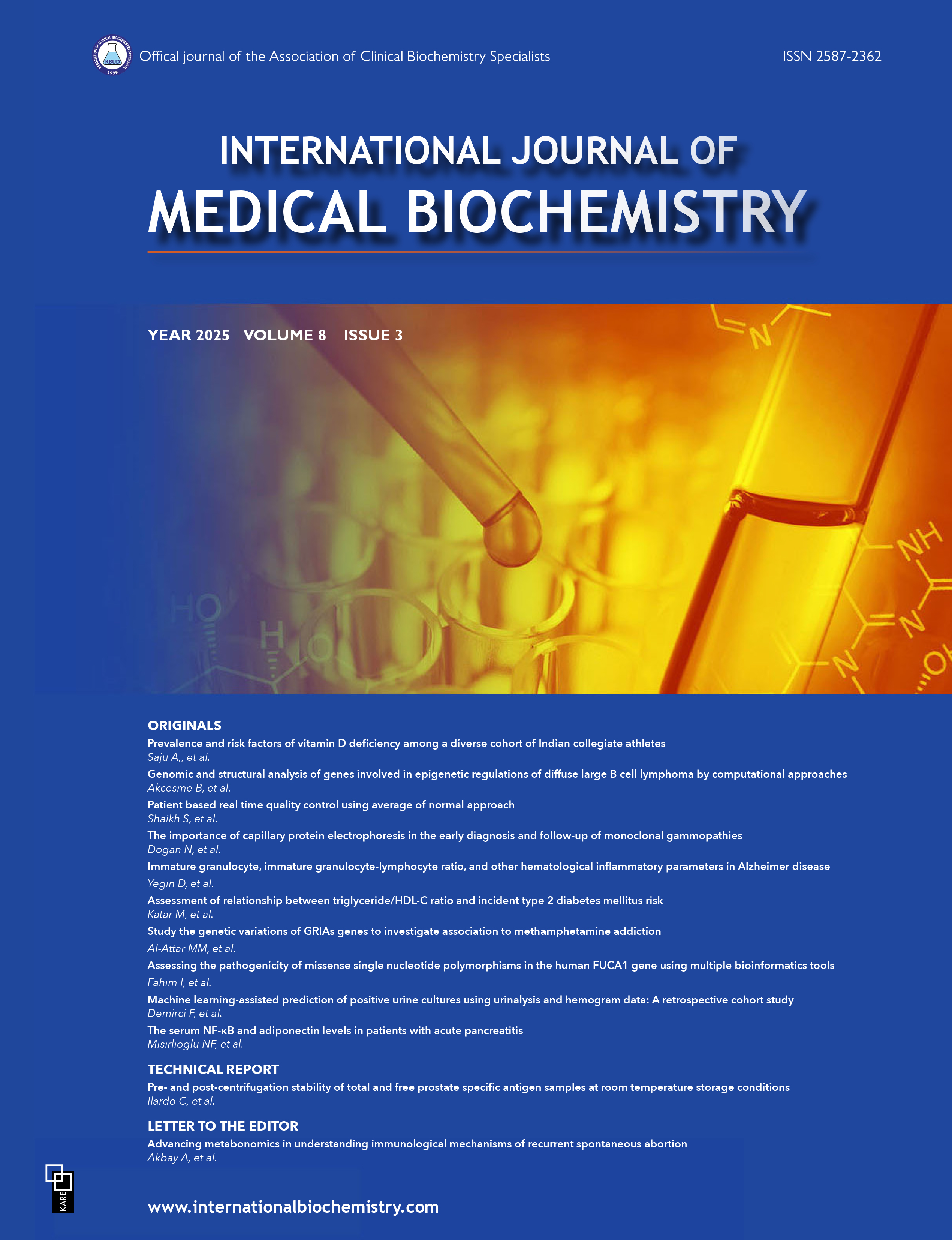An approach to screening for macroprolactinemia in all hyperprolactinemic sera
Nilhan Nurlu Ayan1, Ela Keskin Temeloglu21Department of Medical Biochemistry, Gaziosmanpasa Taksim Education and Research Hospital, Istanbul, Turkey2Department of Endocrinology and Metabolism Diseases, Gaziosmanpasa Taksim Education and Research Hospital, Istanbul, Turkey
INTRODUCTION: Hyperprolactinemia is the most common endocrine disorder of the hypothalamo-pituitary axis and is a result of the over secretion of prolactin (PRL). The presence of the biologically inactive PRL isoform macroprolactin (MPRL) in serum causes interference in the PRL immunoassay, resulting in erroneously high PRL results. The presence of MPRL in serum can be detected using the simple, inexpensive, and routine polyethylene glycol (PEG) precipitation method. This study is an evaluation of the incidence of MPRL in hyperprolactinemic sera and the clinical symptoms and signs of hyper/macroprolactinemic patients.
METHODS: The data of 73 hyperprolactinemic patients were retrieved from the laboratory information system and screened for the demographic details, clinical characteristics, and findings of the patients.
RESULTS: Macroprolactinemia was detected in 13.7 % of the patients with hyperprolactinemia. The serum PRL, PRL percentage recovery, and diluted PRL percentage recovery values of macroprolactinemic patients after PEG precipitation were significantly lower than those of hyperprolactinemic patients (p<0.0001). While there was no significant difference in the percentage of infertility or headache cases among the hyperprolactinemic and macroprolactinemic patients, the percentage of oligo/amenorrhea, galactorrhea, and radiological findings (pituitary adenomas) was significantly greater in the hyperprolactinemic patients (p<0.0001).
DISCUSSION AND CONCLUSION: Measurement of serum MPRL levels using routine PEG precipitation in hyperprolactinemic patients may be very effective in avoiding unnecessary tests and treatments during the diagnosis process and follow-up of patients.
Manuscript Language: English






